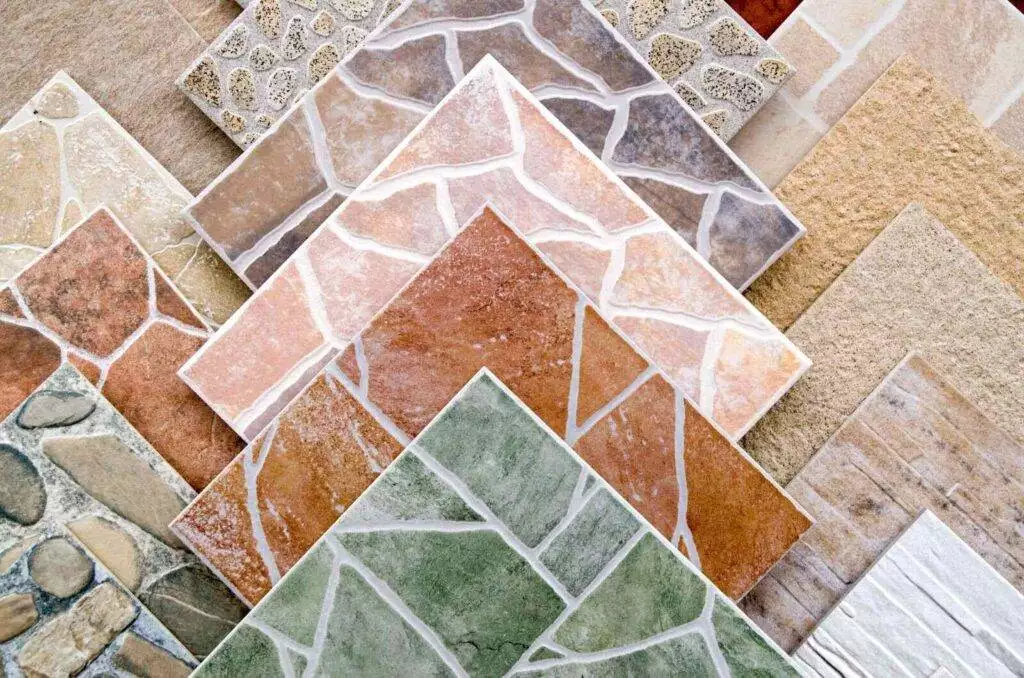Ceramic tiles are a popular flooring material that is made from clay and other natural materials, which helps provide them durability, versatility, and aesthetic appeal. These tiles come in a variety of sizes, shapes, colors, and textures providing consumers with endless design possibilities that will suit their tastes and preferences. Whether used for flooring, walls, countertops, or decorative accents, ceramic tiles offer durability, ease of maintenance, and endless design possibilities which is why they are considered to be a a popular choice for most homeowners.
Ceramic Tiles Prices
The prices of ceramic tiles can vary depending on the quality and size. On average, its price can range from ₱87.50 to ₱366.50.
| Description | Size | Price |
| Tablado Tusi | 30×60 | ₱139.00 |
| Castel BWY Doussie | 200×100 | ₱366.50 |
| Castel BWY Cabbage Bark | 15×90 | ₱196.50 |
| Primo Luxor | 30×30 | ₱102.99 |
| Rossio Siquoia Oak | 60×60 | ₱278.50 |
| Rossio Greco Maja | 60×60 | ₱174.65 |
| Lustro Athens Deco | 30×60 | ₱153.99 |
| Lustro Athens Deco | 30×60 | ₱142.99 |
| MSC Camp Record Grey | 40×40 | ₱87.50 |
| MSC Camp Pixel | 40×40 | ₱87.50 |

Advantages of Ceramic Tiles
Durability – Ceramic tiles are highly durable and can withstand heavy foot traffic which makes them suitable for high-traffic areas such as kitchens, bathrooms, and entryways.
Water Resistance – These tiles are naturally resistant to water which is why they are considered to be the perfect materials to use in wet areas like bathrooms, kitchens, and laundry rooms. This trait also makes them easier to clean and maintain compared to other tile varieties, as they do not absorb as much moisture.
Variety of Designs – Ceramic tiles can mimic natural materials such as stone, wood, or marble, which is why they are available in a wide range of colors, patterns, sizes, and textures, providing consumers with various designs to choose from.
Low Maintenance – These tiles can be easily swept, vacuumed, or mopped with water and mild detergent to keep them looking new. Additionally, ceramic tiles are resistant to stains and scratches.
Hygienic – Ceramic tiles do not conceal bacteria, allergens, or odors due to their non-porous surfaces, which is why they are a popular option for areas where hygiene is important, such as in kitchens and bathrooms.
Disadvantages of Ceramic Tiles
Brittleness – Ceramic tiles are known to be brittle and are sometimes prone to chipping and cracking if they are regularly subjected to heavy impacts. This is why it’s important to follow the proper installation processes and careful handling of the materials to minimize the risk of damage.
Hardness – These tiles are hard and rigid underfoot, which can make them uncomfortable to stand on for extended periods, especially in areas where people frequently stand, such as kitchens.
Coldness – The coldness of the ceramic tiles can sometimes be uncomfortable for bare feet, especially in the cold season, so it’s common to use rugs or mats just to provide additional warmth and comfort.
Video about Ceramic Tiles
FAQs
What are ceramic tiles used for?
Ceramic tiles are used for a variety of purposes such as flooring, wall coverings, outdoor spaces, and decorative accents in both construction and interior design.
Is porcelain or ceramic tile better?
In terms of durability, porcelain tiles are more durable due to their density compared to ceramic tiles.
Are ceramic tiles good for flooring?
Yes, ceramic tiles are considered to be a good material for flooring because of their durability, moisture resistance, and easy maintenance.
Is ceramic tile waterproof?
Although ceramic tiles are resistant to water to some extent, they are known to absorb water which can lead to damage.
Which is cheaper porcelain or ceramic?
Porcelain tiles are considerably more expensive than ceramic tiles.


